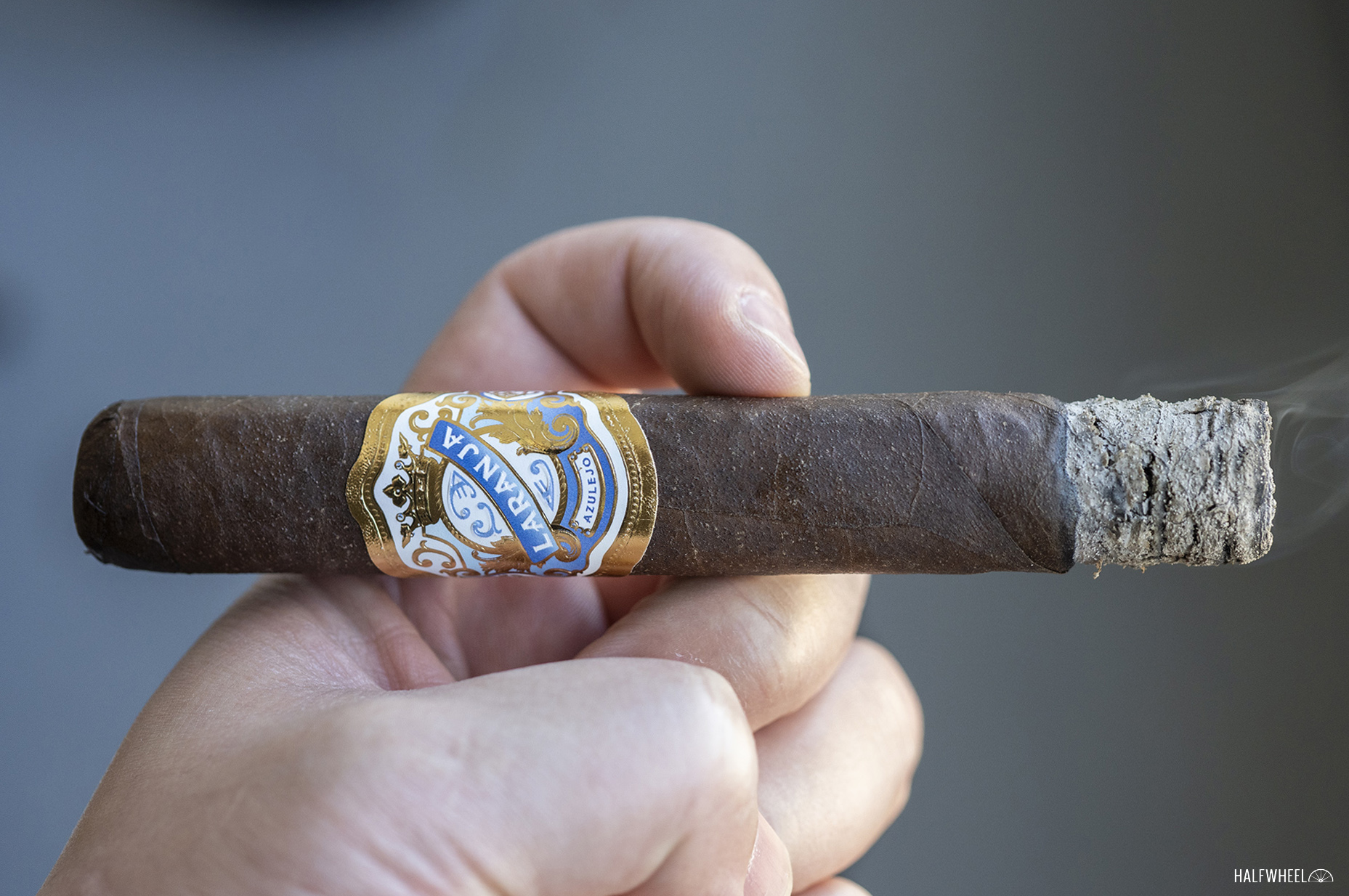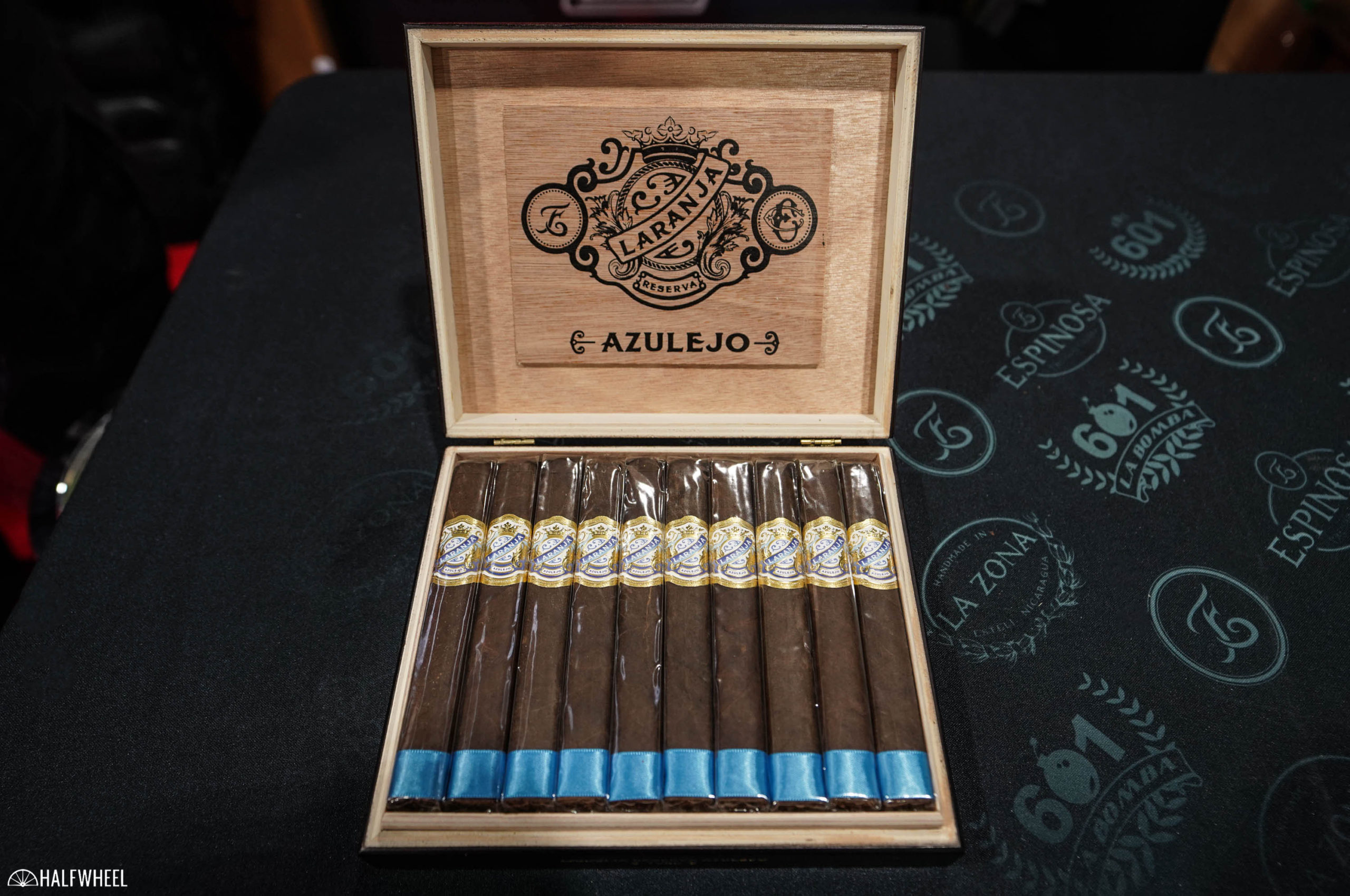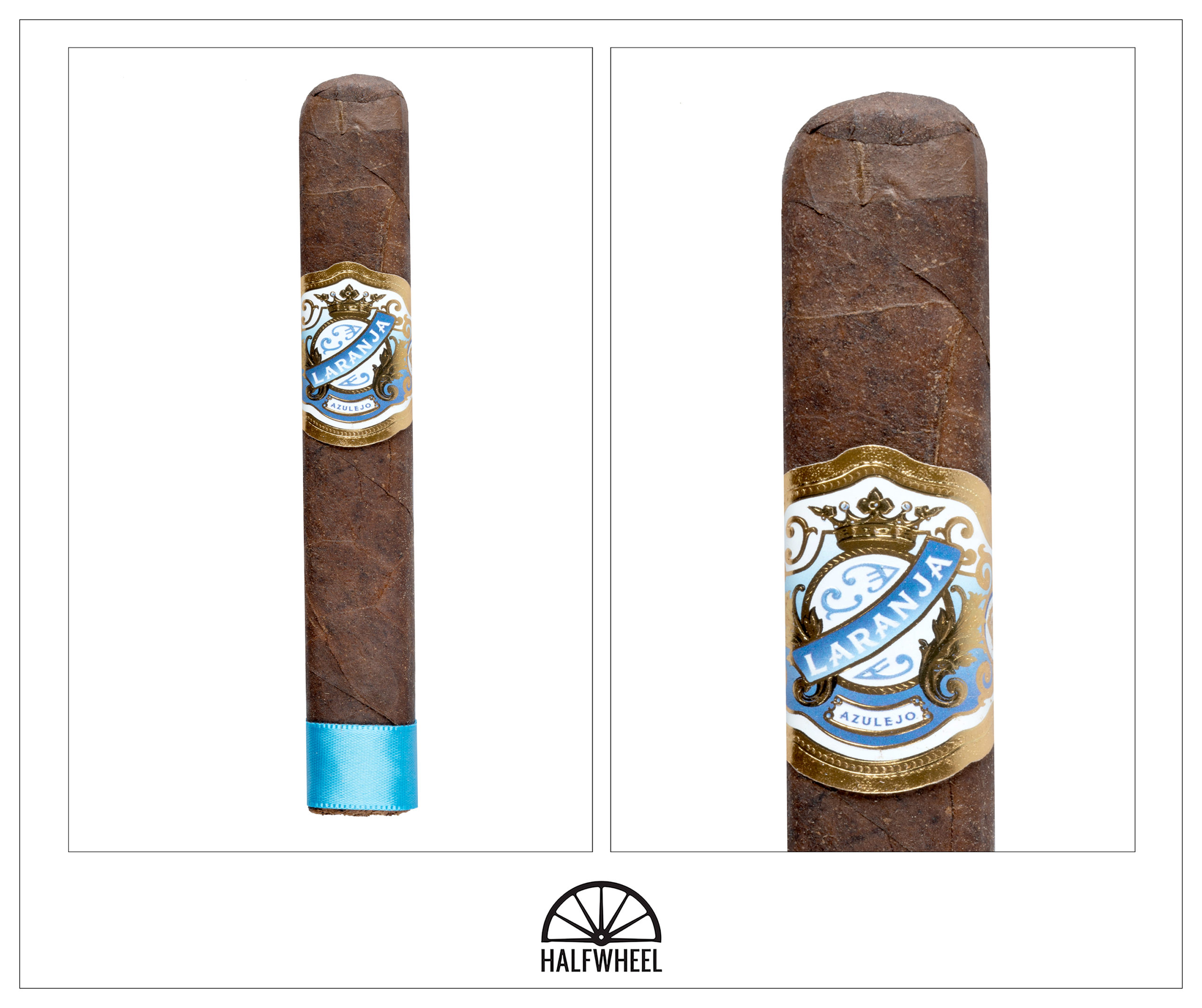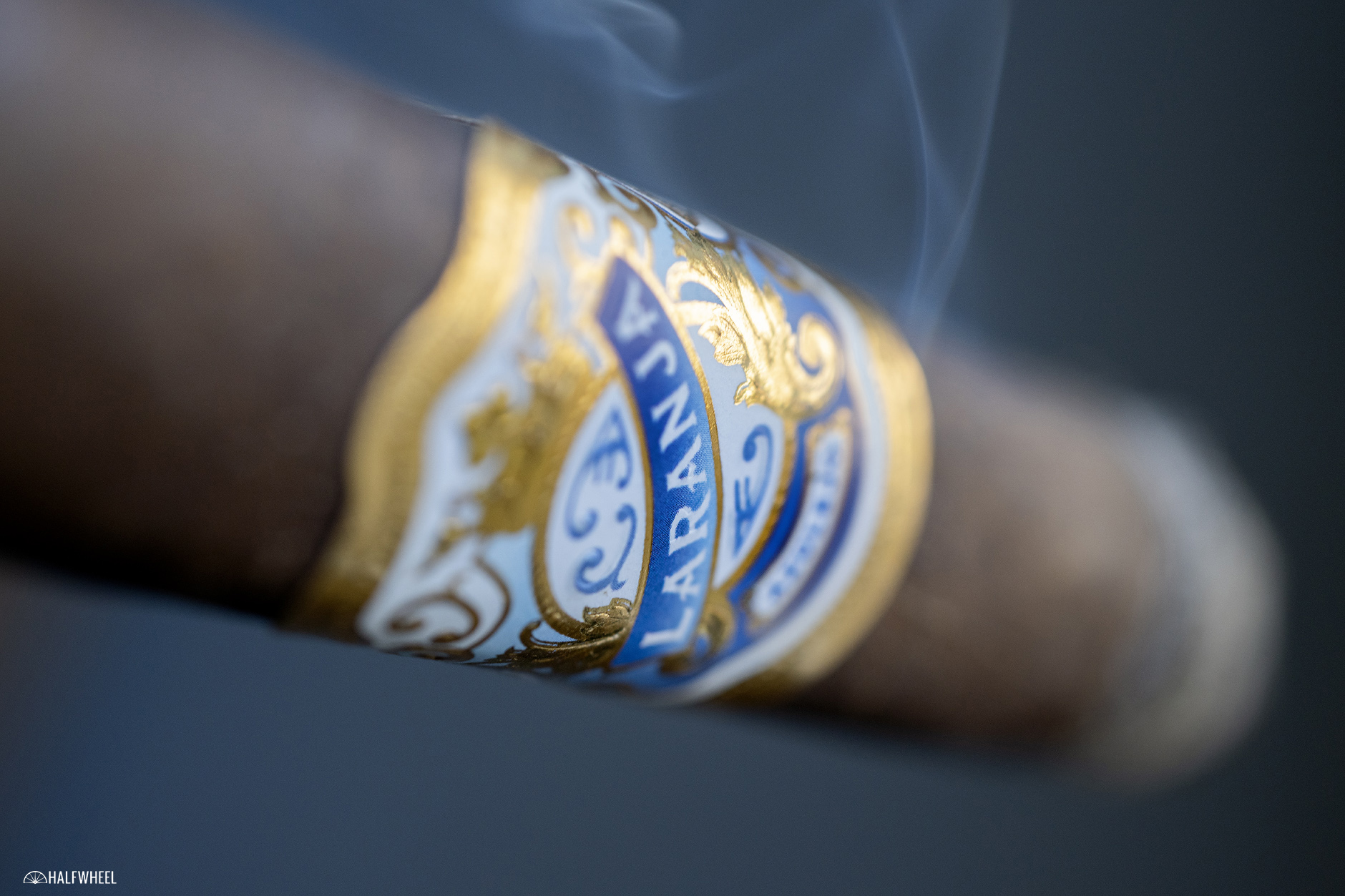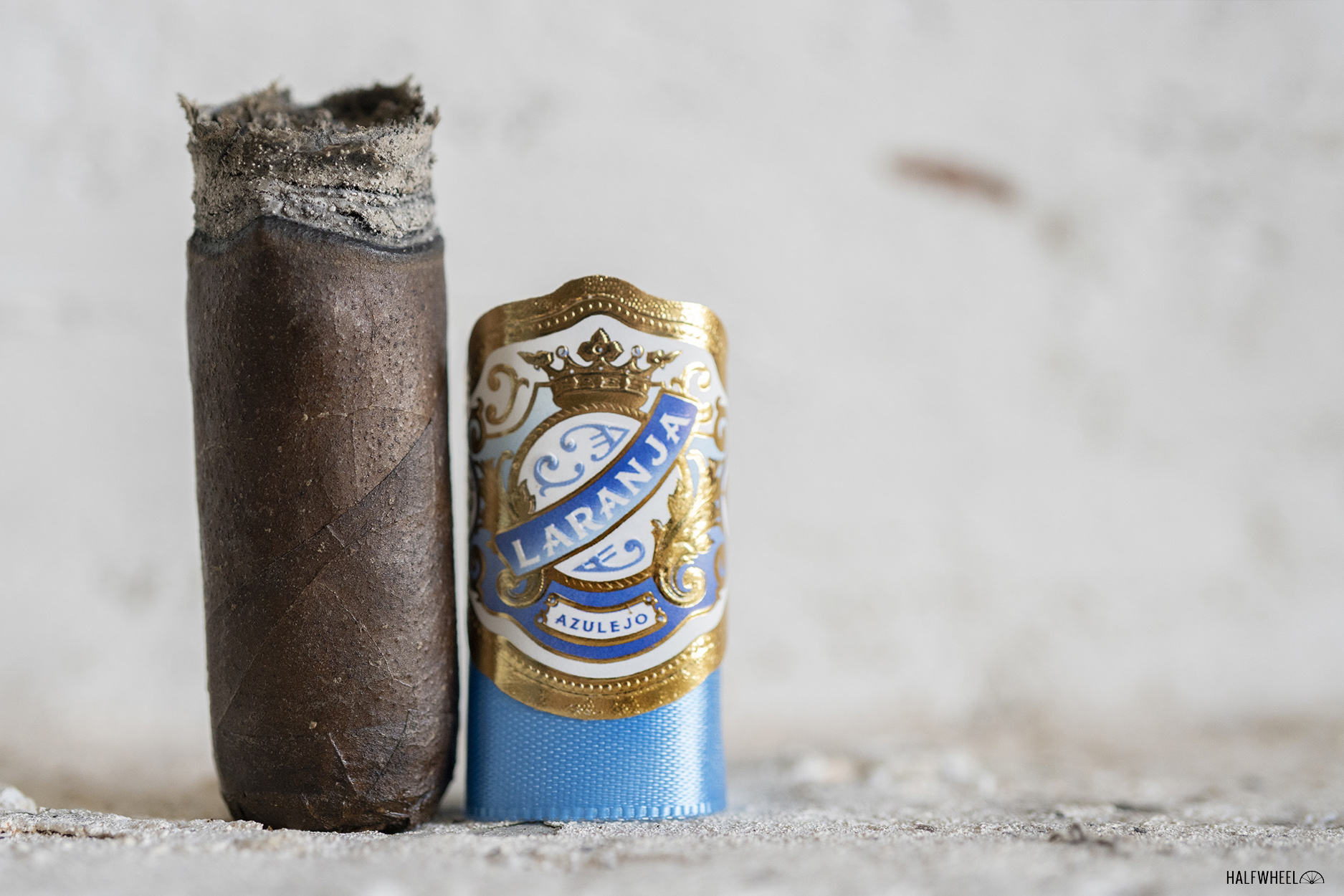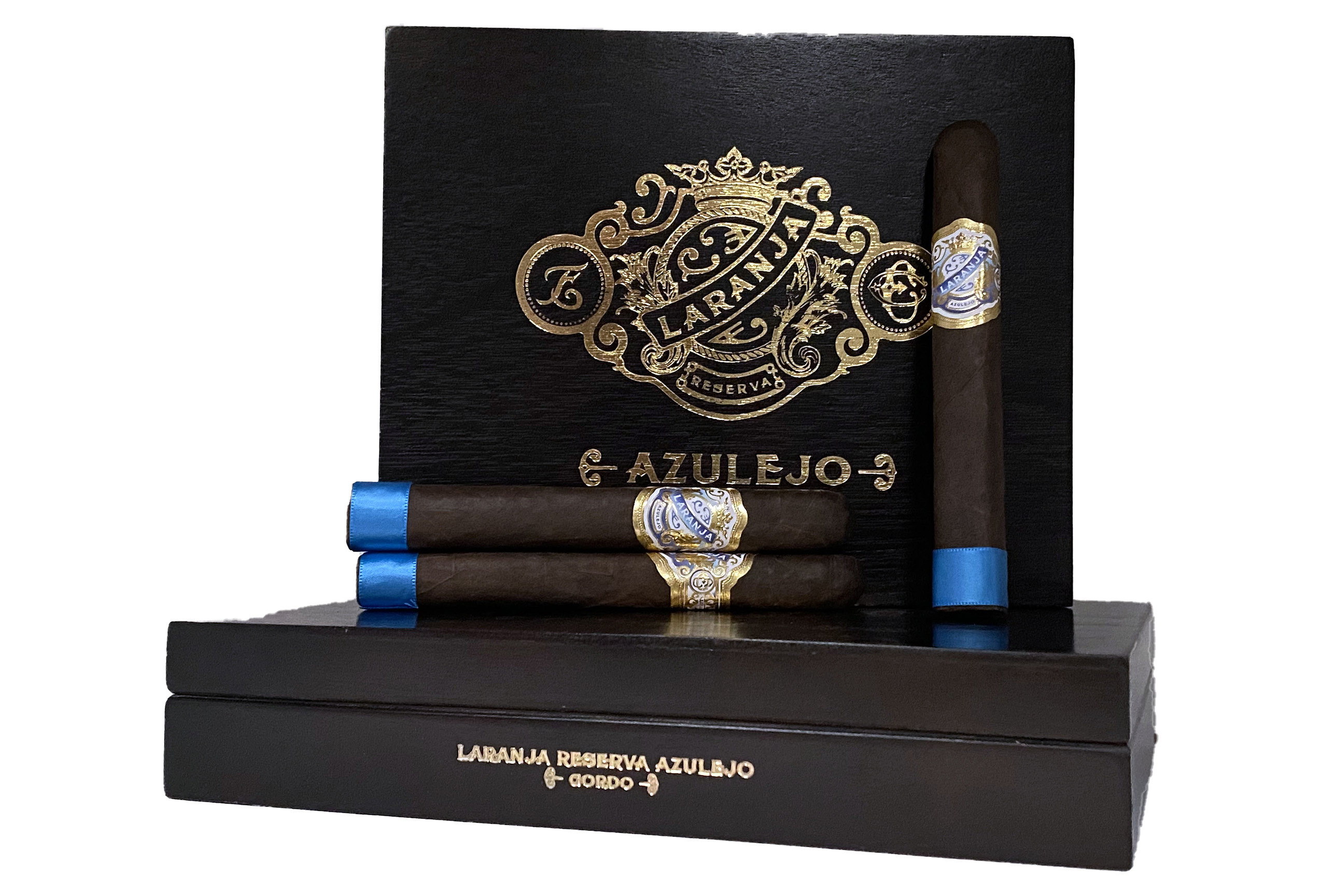Perhaps more than most companies, Espinosa Premium Cigars seems to have a few flavor profiles that it regularly likes to go to when it makes cigars. There’s the super strong, almost brash, profiles of the 601 La Bomba and its spin-offs; the eponymous Espinosa lines fall into a medium spicy profile that might be the backbone of the company; there’s the classic San Andrés profile that I find in some of the company’s cigars like Murcielago. But every once in a while Espinosa heads to a completely different spot and the results have been excellent. There are three lines that lead to me making that statement: 601 Black, 601 White and Laranja Reserva.
Ever since smoking my first Laranja seven years ago, the line has been my first choice of cigar from Espinosa, other than the shade wrapper versions of 601. It’s a line that I think of as having not only balance but also finesse.
Earlier this year, Espinosa Premium Cigars announced that it would add a third blend to the Laranja family: Reserva Azulejo. Like the original Laranja—Portuguese for orange—the Azulejo is also inspired by a color, this time a reference to a style of blue tile.
Blend-wise, the cigar uses an Ecuadorian Sumatra wrapper over a Brazilian Arapiraca binder and fillers from all four of Nicaragua’s growing regions. Like many other cigars in the Espinosa Premium Cigars portfolio, it is being produced at AJ Fernandez’s San Lotano Factory in Ocotál, Nicaragua.
The line began shipping to stores in late September, debuting in four sizes:
- Espinosa Laranja Reserva Azulejo Corona Gorda (6 x 46) — $11 (Box of 20, $220)
- Espinosa Laranja Reserva Azulejo Robusto Grande (5 1/2 x 54) — $11.60 (Box of 20, $232)
- Espinosa Laranja Reserva Azulejo Toro (6 x 52) — $12.05 (Box of 20, $241)
- Espinosa Laranja Reserva Azulejo Gordo (6 x 60) — $12.70 (Box of 20, $254)
- Cigar Reviewed: Espinosa Laranja Reserva Azulejo Robusto Grande
- Country of Origin: Nicaragua
- Factory: San Lotano Factory
- Wrapper: Ecuador (Sumatra)
- Binder: Brazil (Arapiraca)
- Filler: Nicaragua
- Length: 5 1/2 Inches
- Ring Gauge: 54
- Vitola: Robusto Extra
- MSRP: $11.60 (Box of 20, $232)
- Release Date: September 2021
- Number of Cigars Released: Regular Production
- Number of Cigars Smoked For Review: 3
There’s almost zero color variation across the wrapper of the Laranja Reserva Azulejo Robusto Grande. The same cannot be said about the band, which features a number of different blue colors. While I can’t find much to complain about with the dark wrapper and the aggressive box-press, I’m not entirely sold on the band, particularly the blue gradient. The aroma from the wrapper has lots of barnyard over top of leather, raisins and a salty and briny flavor that reminds me of shellfish. While that aroma is bizarre, the main takeaway should be that there’s a ton of barnyard. The foot is also medium-full with woodiness, a chocolate aroma, nuttiness and some creaminess. Cold draws have a chocolate milkshake flavor over some roasted coffee beans and a bit of an artificial apple flavor. It’s medium-full in intensity, but my main concern is that the draw is quite open on two samples. I also can taste this sensation that I strongly associate with nicotine, which leads me to write down in my notes “(I) very much know what I’m about to get into.”
For 10 minutes, my prediction manifests itself into reality. Flavor-wise there’s a smooth mixture of leather and bread before nuttiness and burnt flavors come to play. The burnt flavors mix with toastiness and a bit of pepper, the result is strong and not great. All of the finesse that I associate with the original Laranja is completely gone and I’m wondering what the point of this cigar is. I should have known that there was a decent chance that my prediction would end up jinxing it from actually happening, but the larger cue that I may have judged the Laranja Reserva Azulejo Robusto Grande too soon is that I can’t feel any of the strength. After 10 minutes I can taste the burnt flavors letting up, and about 20 minutes later the profile has reached a level of balance that I find enjoyable. The main flavor is a mixture of nuttiness and saltine crackers. Behind those two I find mineral flavors, burnt flavors and then white pepper and paprika on my tongue. The latter two flavors are a bit more intense than I’d like, but I’ll take that duo over the burnt flavor. Toastiness is much stronger on the finish—generic toastiness, burnt flavors, charcoal are all present at times—though I also get white pepper, leather and a grape-like sweetness. My notes say “It’s not a mess, but it’s not the most coherent profile.” Retrohales have enough paprika that it’s tough to pick up any other sensations. There’s certainly some burnt flavors, but it seems like a half of a second after the smoke hits my nose the paprika just explodes. The finish has nuttiness, some sugar sweetness, paprika and a weird saltiness in my mouth. Flavor starts full but settles down to medium-full, body is full and strength is medium-full. Construction is excellent in the first third.
Depending on the cigar, there’s a varying degree of toastiness. One cigar has zero toastiness, another cigar has it as a secondary flavor and another cigar sees the toastiness almost take the top spot. I’d be indifferent to which is the best of the bunch except for the fact that I already experienced more toastiness than I’d like in the first 10 minutes of the cigar. Beyond the toastiness, cedar and brown mustard are the strongest flavors. There’s some underlying pear-like sweetness that comes and goes throughout the middle portion. The finish has wet leaves, nuttiness, mustard, saltiness and a mayo-like creaminess. I’m guessing that the mayonnaise-like creaminess is a result of some saltiness, which at times gets overwhelming and is definitely impacting the other flavors. Retrohales have peanuts, creaminess, white pepper, red pepper, leather and saltiness. It produces flavors that are noticeably sharper than when the smoke is restricted to just my mouth, which isn’t for the better. The finish has acidity, citrus, earthiness, creaminess and some caramel. There’s a bit of a Jekyll and Hyde relationship with the retrohale’s finish. At times, it’s my favorite part of the second third, other times it’s quite burnt. Flavor is medium-full, body is medium-plus and strength is surprisingly medium-plus. Touch-ups are needed on two cigars, though my larger issue is the draw is beginning to leave the “slightly open” category and move to the “open” category.
While there’s still saltiness in the final third, it’s not similar to what I found in the second third of the Laranja Reserva Azulejo—and that’s definitely a good thing. Earthiness takes over as the main flavor with the saltiness and crackers slightly behind it. In addition, I find some cedar and some burnt flavors that remind me of fire-cured tobacco at times. The finish has cedar, crackers, saltiness, herbal flavors and earthiness. Retrohales are interesting thanks to a resurgent toastiness mixing with a green grape flavor and red pepper. I’m not sure the flavor is particularly appetizing, but it is unique. The finish has a silky flavor I can’t quite pick up, hay, leather, and a sweet grape flavor that reminds me of grape soda. Flavor is medium-full, body is medium-full and strength is somewhere between medium-plus and medium-full. Construction-wise, one cigar is great while the other two are struggling with open draws that are also affecting smoke production.
Final Notes
- If there was a contest for “what cigar has a name that most Americans cannot pronounce properly” this would be a solid entry into the competition. I still screw up the J sound in Laranja quite regularly.
- Many people in the manufacturing side of the business will tell you about a longstanding belief that blue is not a good color for cigar bands. In fact, J. Cortés’ rise to popularity in Europe is partially credited for being the only company to use blue, which helped to make it unique compared to its competitors. If you think about Habanos S.A.’s portfolio, there’s almost no blue found on the bands of Cuban cigars unless you count random Edición Regional cigars.
- I think blue works on some cigars, but there’s one part of the band that I think could be done better. Unlike the original Laranja and the Laranja Escudo, the color behind the text that says “Laranja” across the center of the band has a gradient background. This looks awkward to me and once I saw it I couldn’t unsee it. What’s odd is that the original Laranja and the Laranja Escudo both have a solid background for that part of the band.
- The first 10 minutes of this cigar were a lot of burnt and toasty flavors that I don’t find particularly pleasant. After that point, they are reduced but still linger around. It’s not a great start in my opinion.
- There are times in which I am pretty sure I know what wrapper is being used on a cigar, other times when I can have an educated guess, and then times like this where there’s zero chance I could provide any insight as to what wrapper is used based on the flavor of the profile.
- I’m not sure where this release is supposed to fall in between the original Laranja and the Laranja Escuro in terms of profile and/or strength. For me, the original Laranja remains the best of the bunch—I don’t think it’s particularly close—the Escuro is an easy second and this is my least favorite of the bunch.
- Cigars for this review were purchased by halfwheel.
- Final smoking time varied between one hour and 50 minutes and two hours and 20 minutes. My normal approach is to smoke the cigar pretty slow as I find it usually produces smoother and more detailed flavors. In this case, I preferred smoking the cigar a bit quicker as it seemed to shorten the number of times I found the profile to be unbalanced.
- Site sponsors Atlantic Cigar Co., Famous Smoke Shop and JR Cigar carry the Laranja Reserva Azulejo Robusto Grande.
With the exception of the second sample I smoked—which started with a manageable amount of toastiness—it’s really tough to look past the first 10 minutes of the Laranja Reserva Azulejo Robusto Grande. I’m not sure the issue is actually the toastiness, but rather it shows a common theme I found, the flavor profile gets rather unbalanced at times and doesn’t recover to a place that is much beyond okay. And while my lasting memory of the cigar will be the burnt flavors, I think an equal amount of criticism can be levied on the cigar when it’s not too toasty, not too salty or not too spicy. Those profiles—the in-between places—aren’t anything special and because of that, I can’t justify the unbalanced parts of the profile. As someone that has always boasted about the Laranja, this blend is a disappointment.

